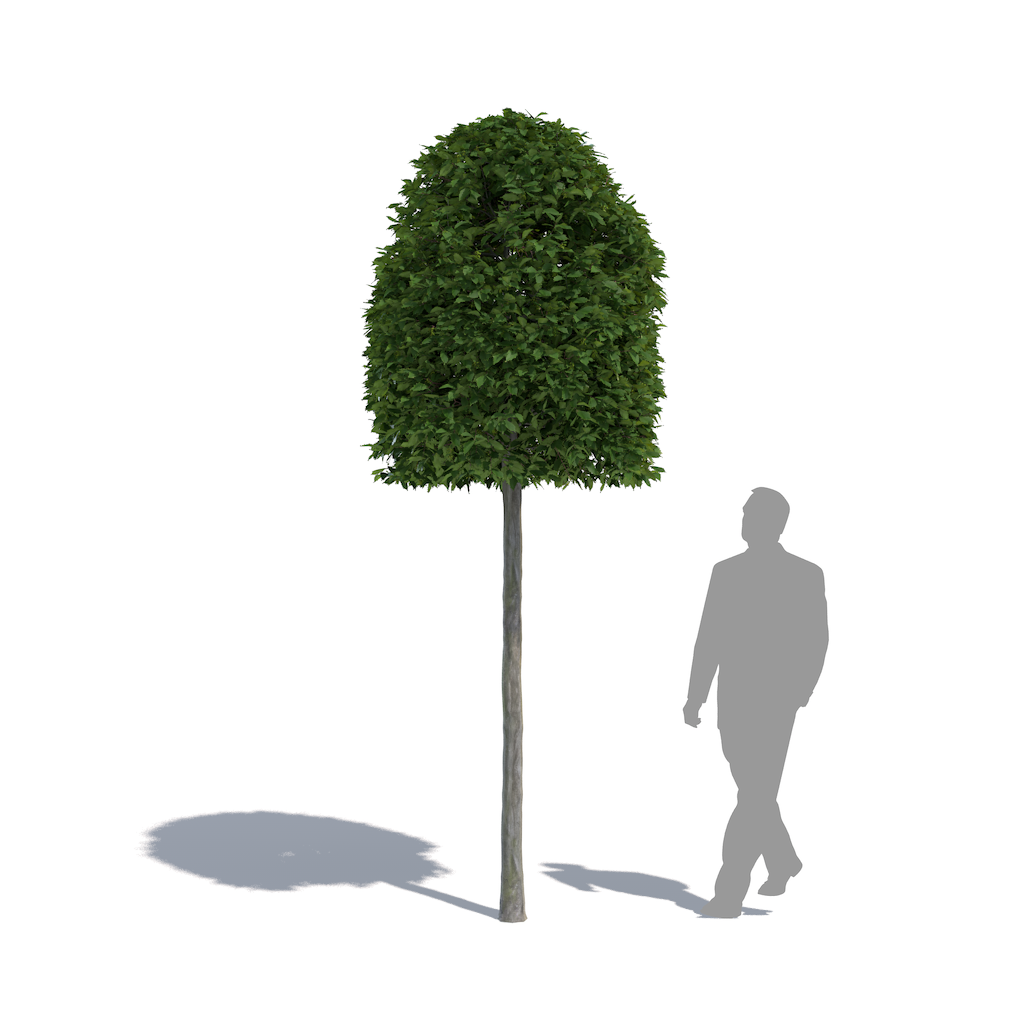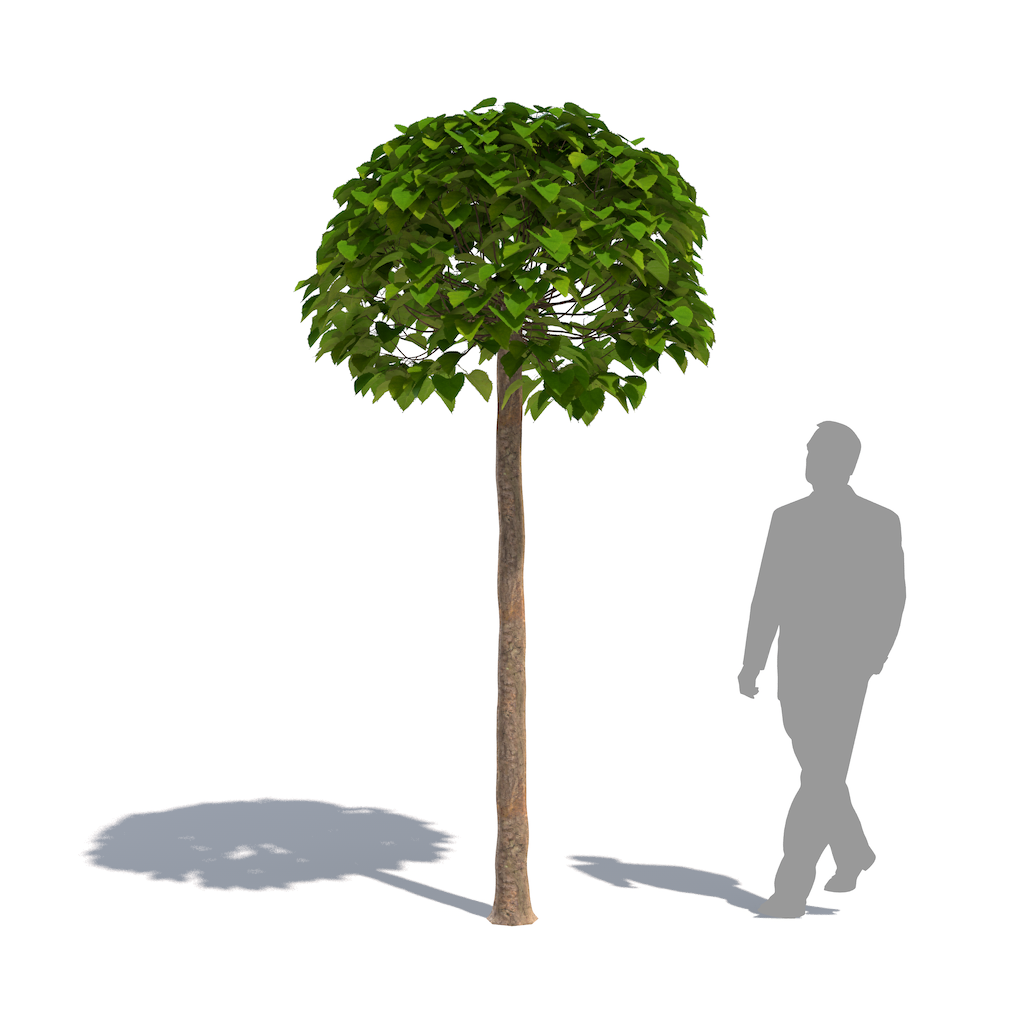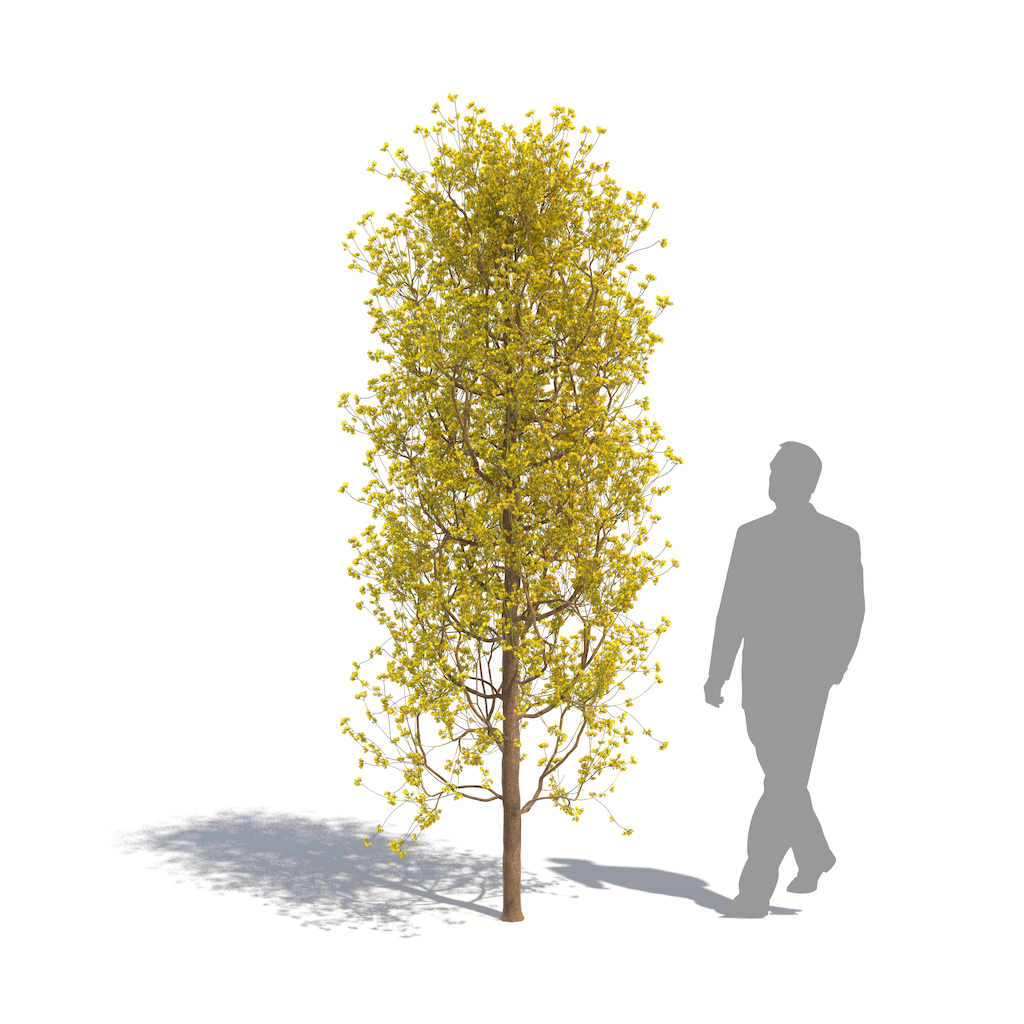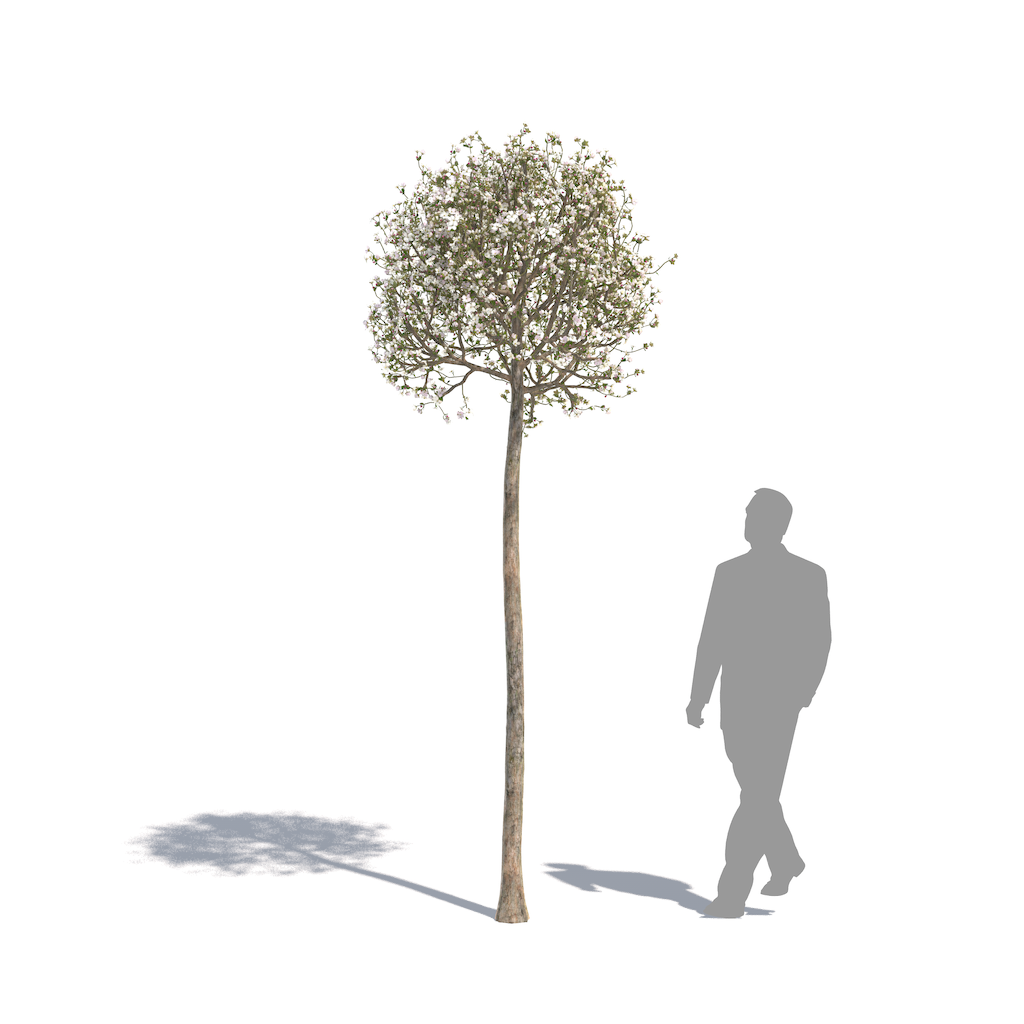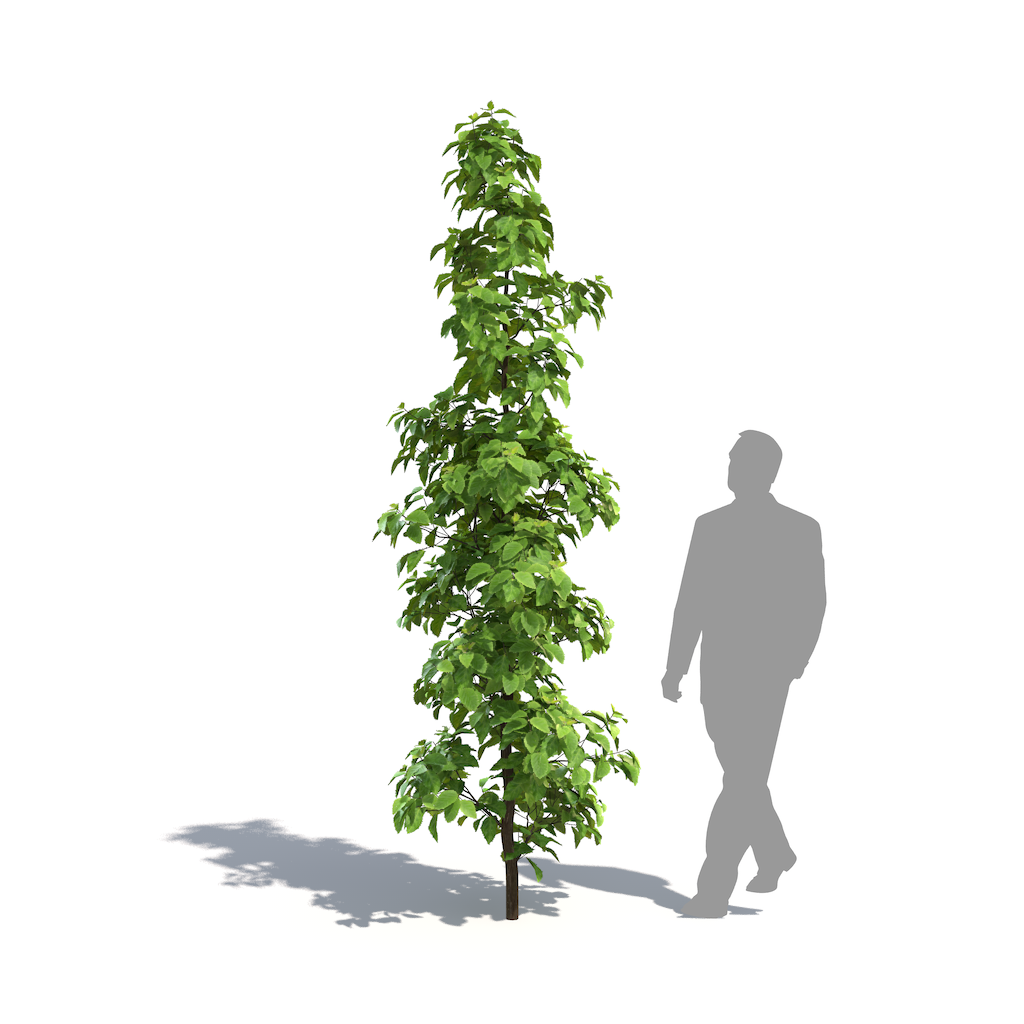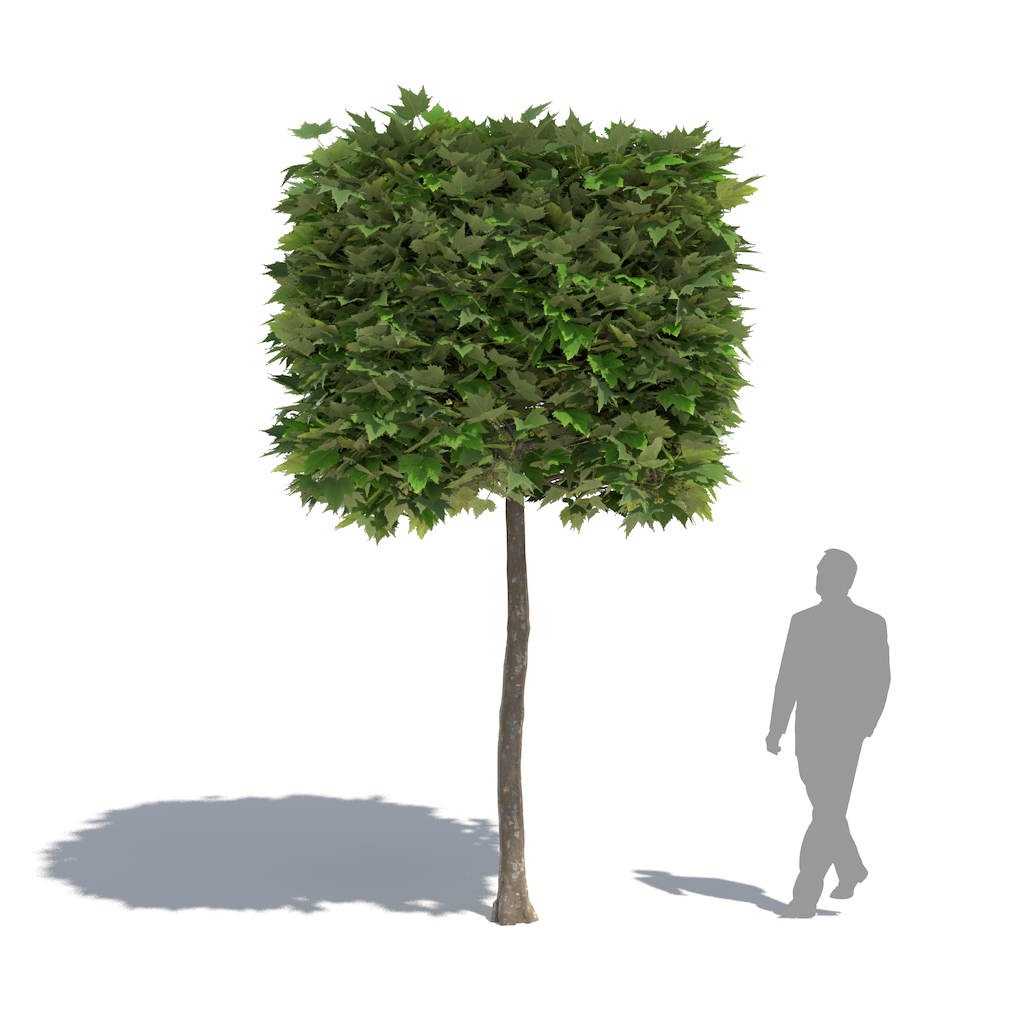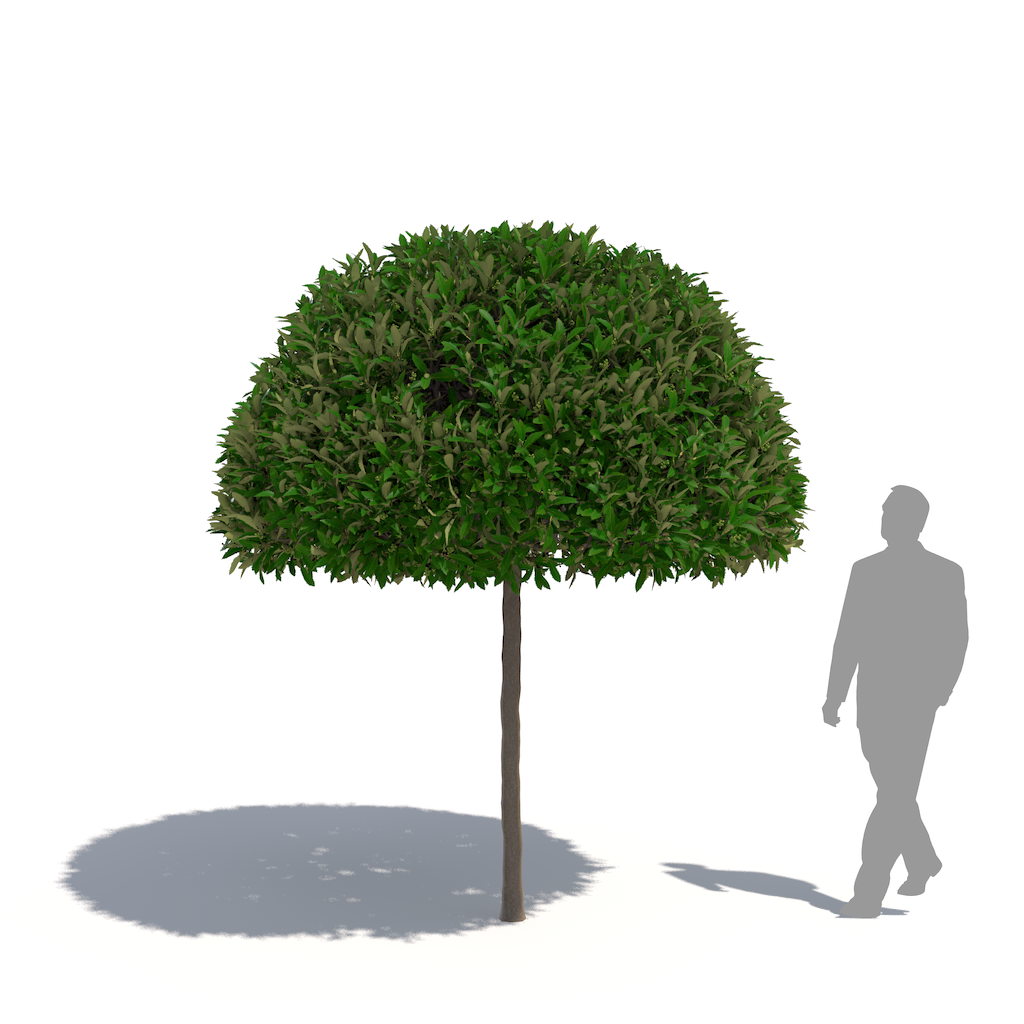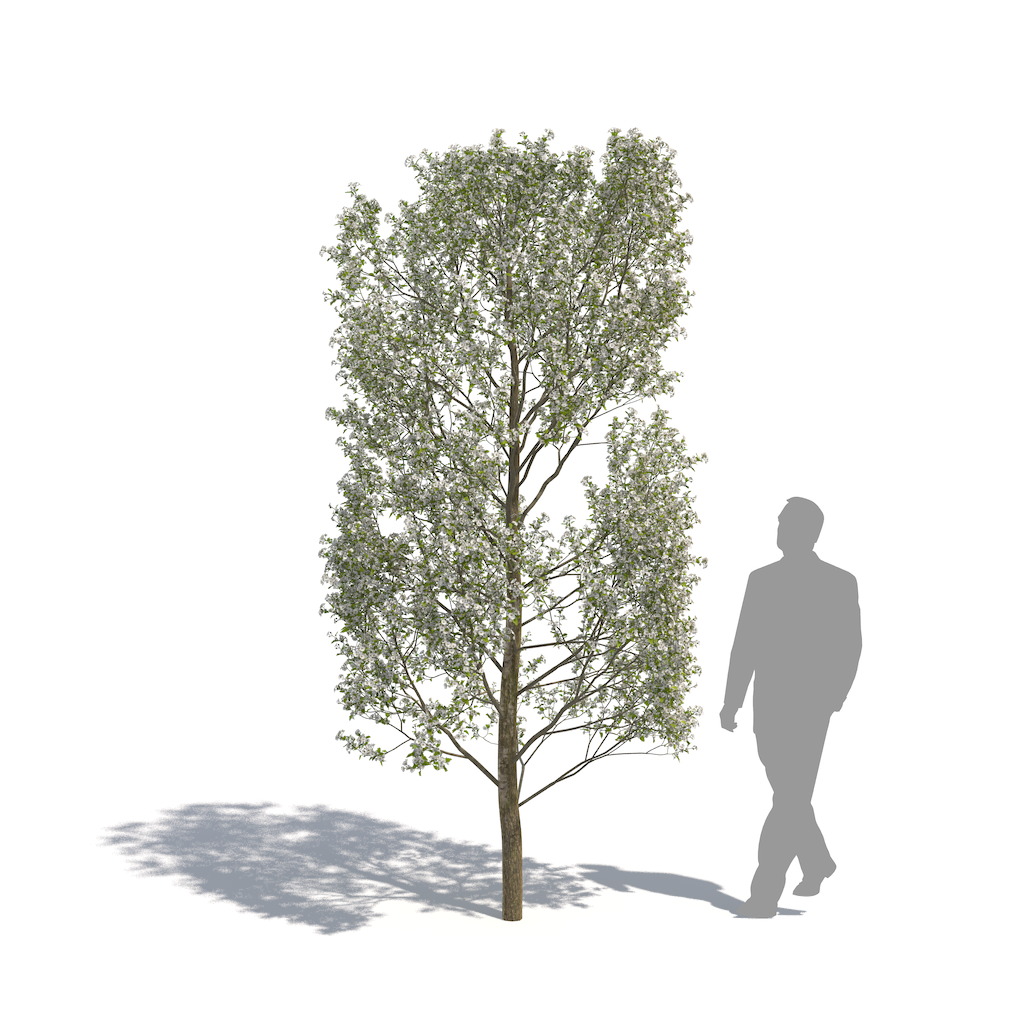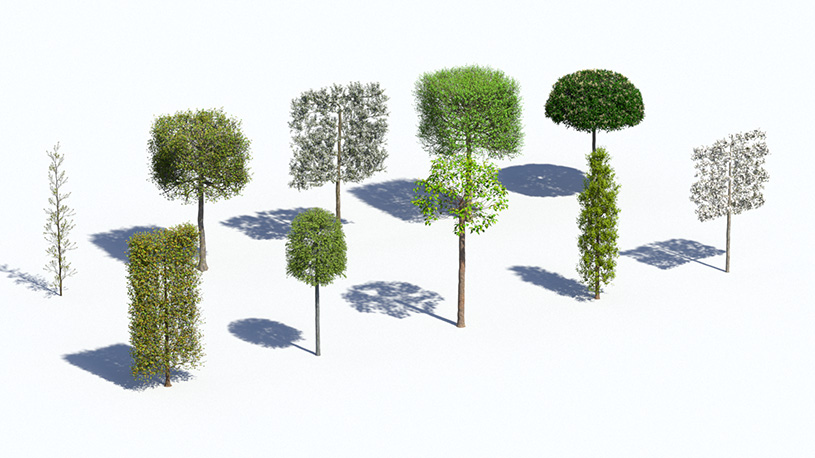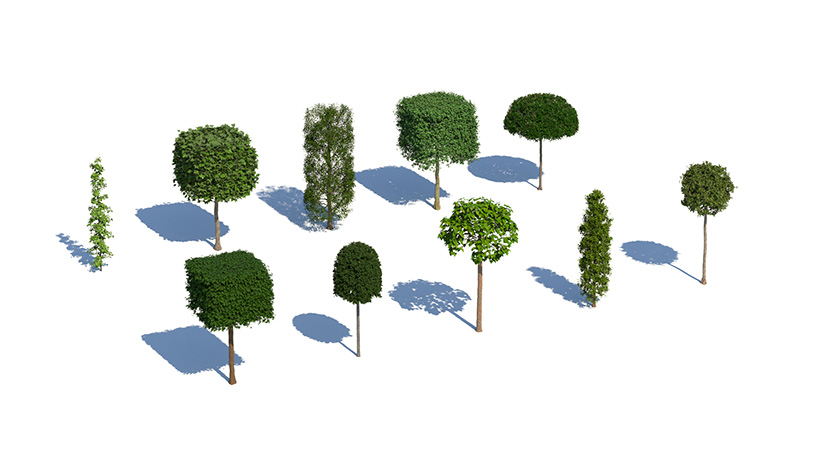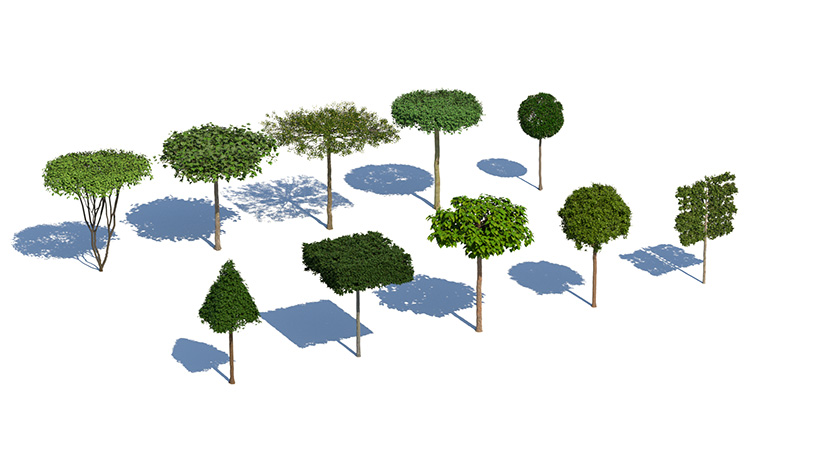Description
Formal garden (CG artwork by Kizo, using Cinema 4D and Corona Render, Laubwerk Plants, including Kit 16).
LAUBWERK PLANTS KIT 16 – TEMPERATE TOPIARY TREES
The following 10 tree species are included in the Plants Kit 16. Each species comes in 36 variations per species, i.e. 3 variants, 3 ages and 4 seasonal aspects, for a total of 360 models per Kit.
ELSRIJK FIELD MAPLE
Acer campestre ‘Elsrijk’
Small-sized deciduous tree, both as an espalier and as a high stemmed tree with spherical crown. Brown bark with vertical and horizontal cracks. Small, three- to five-lobed, richly green leaves with showy, bright yellow autumn colours. Small, yellow-green flower spikes in May. Characteristic light green, doubled wingnut. An American selection made from established city trees in Ohio in 1953. Introduced to the Netherlands in 1985, where it has become the most popular field maple cultivar. Is often used as a street tree, furthermore it is a beautiful ornamental solitary shrub for gardens. Compared to the original Acer campestre this species is free of mildew.
EUROPEAN HORNBEAM
Carpinus betulus
Small-sized, deciduous tree, formed as beehive, trapezium and espalier. Silvery to dark gray bark and gray-black branches. Alternate, fresh green, ovate to elliptical leaves with yellow-brown colour in autumn. Yellowish inconspicuous catkins in May and inconspicuous fruits. Due to its great structure, excellent tolerance to cutting, and attractive growth hornbeam has long been used for pleaching and training. Pleaching refers to the horizontal training of the branches. This practice is an ancient tradition in European gardens, e.g. for creating avenues in grand gardens. Nowadays used as a neat and formal approach in urban gardens.
DWARF SOUTHERN CATALPA
Catalpa bignonioides ‘Nana’
Grafted, high-stemmed, slow-growing, small deciduous tree with globular, dense crown. Thin trunk with grey, flat rilled bark. Large, fresh-green, heart-shaped leaves that lie one above the other, late in leafing out, spectacular yellow autumn color. Usually no flowering, therefore no fruits. The tree can be pruned vigorously every few years to encourage the crown. Widely applied in small gardens, containers, patio gardens, on squares, and round-abouts. Excellent tree for planting in a mixed border, where spring-flowering plants and bulbs will get plenty of sun before the leaves emerge, and then providing welcome shade in the summer months. The resistance to pollution lends to its use in street plantings.
CORNELIAN CHERRY ‘JOLICO’
Cornus mas ‘Jolico’
Slow-growing, deciduous shrub or small tree, shaped both as a cylinder, as a multi-stemmed umbrella or as a globe shaped topiary. With a red-brown scale-shaped bark that partially peels off. Elliptic-pointed leaves in dark green, which turn reddish-yellow in autumn. Striking, beautiful yellow flower umbels in spring. Tasty, decorative, oval stone fruits in brownish-red. Fruits contain a high amount of vitamin C and are suitable for making jams, jellies and liqueurs.
CRAB APPLE ‘EVERESTE’
Malus ‘Evereste’
Deciduous large shrub or small tree, formed both as roof-trained, as multi-stemmed roof-trained and as an espalier. Dark brown, bald bark on the trunk. Dark green, medium-sized, oval leaves, which turn yellow-orange in autumn and remain hanging for a long time. White, cup-shaped flower in early May to mid-June. Higly ornamentaly, small, spherical, bright fruits from orange-red to red. Beautiful ornamental topiary, which is perfect as a solitary tree for gardens and parks.
PERSIAN IRONWOOD ‘BELLA’
Parrotia persica ‘Bella’
Slow-growing, deciduous shrub or small tree, formed both as a cylinder, as a multitrunk umbrella and as an espalier. Glabrous olive branches and purple to light gray bark on the trunk. Off-white, leathery, shiny, obovate leaves that become increasingly dark green and turn maroon in fall. Brown, small capsule fruit. ‘Bella’ is a selection from seedlings grown using seeds collected in the wild in the North Caucasus, selected for the good ascending stem and balanced crown structure. Used in (roof) gardens but also in streets, avenues, containers and on squares. Fantastic climate tree for urban conditions. Robust, hardy and very tolerant except for paving and soil compaction.
MALBURG PLANE
Platanus x hispanica ‘Malburg’
Fast-growing, deciduous large tree, formed both as a block, as a branched candlestick and as a roof-trained topiary. Showy peeling camouflage-like bark from gray-green to yellow-green. Large, medium-green, hand-shaped, serrated leaves. Yellow-green, inconspicuous, small flowers in May. Showy, spiny, medium-sized, spherical capsule fruit. Elegant Dutch cultivar raised from a selected avenue tree in Huissen in 1981. Significantly smaller than original species, much more compact, oval to broadly oval crown and therefore well suited for avenues and narrower gardens. Good on all soils, tolerant of pollution and hard surfaces.
PORTUGAL LAUREL ‘ANGUSTIFOLIA’
Prunus lusitanica ‘Angustifolia’
Evergreen shrub or small-sized tree, formed both as a beehive, as a beehive on stick and as a cone on stick. Smooth, black-brown bark and purple to purple-green branches. Dark green, slightly leathery, oblong egg-shaped pointed leaves with distinctly serrated leaf margin. Slightly fragrant, creamy white grape-like inflorescences. Small, dark red to black purple fruits. Has been widely used since Victorian times to create Italian style gardens. Exotic appearance. Frost hardy tree that does well in full sun but thrives almost anywhere.
CALLERY PEAR ‘CHANTICLEER’
Pyrus calleryana ‘Chanticleer’
Small to medium-sized, deciduous tree, formed botah as a column with a short stem, as an espalier and as a roof-trained topiary. Thornless, bare, brownish bark on the trunk. Alternate, ovate to roundish, large, dark green leaves with beautiful autumn colours from yellow to orange and scarlet and purple. Numerous white umbels in spring. Fruits are small greenish-brownish pears. Important nutrient tree for birds and bees. Cultivar bred by Edward Scanlon in the 1950s with its parent plants brought from China in the early 20th century. Attractive, low maintenance tree with a tolerance of pollution making it a favorite with architects, landscapers, and gardeners. One of the first trees to come into leaf and of the lastto lose its leaves. Therefore, one of the best deciduous trees to be used for screening.
SMALL-LEAVED LIME ‘GREENSPIRE’
Tilia cordata ‘Greenspire’
Fast-growing, deciduous, medium-sized tree, both as a block, as an espalier and as a roof-trained topiary. Ridged, dark brown bark and green branches, which will turn redbrown. Large, round, glossy, dark green leaves with heart-shaped leaf base. Fragrant yellow to cream-colored flower spikes. Yellowish round, bald fruits that are becoming increasingly fuzzy. Uniformly growing American selection that was bred in the USA in 1961. Valuable for insects. Tolerates paving, tree anchors into the ground less well than does the species.
INCLUDES 360 MODELS
All Laubwerk Plants in this Kit come in 36 variations per species, i.e. 3 variants, 3 ages and 4 seasons. Here are a few examples of the variety:
Spring: 10 out of 360 temperate deciduous tree models of Laubwerk Plants Kit 16
Summer: 10 out of 360 temperate deciduous tree models of Laubwerk Plants Kit 16
Fall: 10 out of 360 temperate deciduous tree models of Laubwerk Plants Kit 16
Summer: 10 out of 360 temperate deciduous tree models of Laubwerk Plants Kit 16
Summer: 10 out of 360 temperate deciduous tree models of Laubwerk Plants Kit 16
Summer: 10 out of 360 temperate deciduous tree models of Laubwerk Plants Kit 16.






